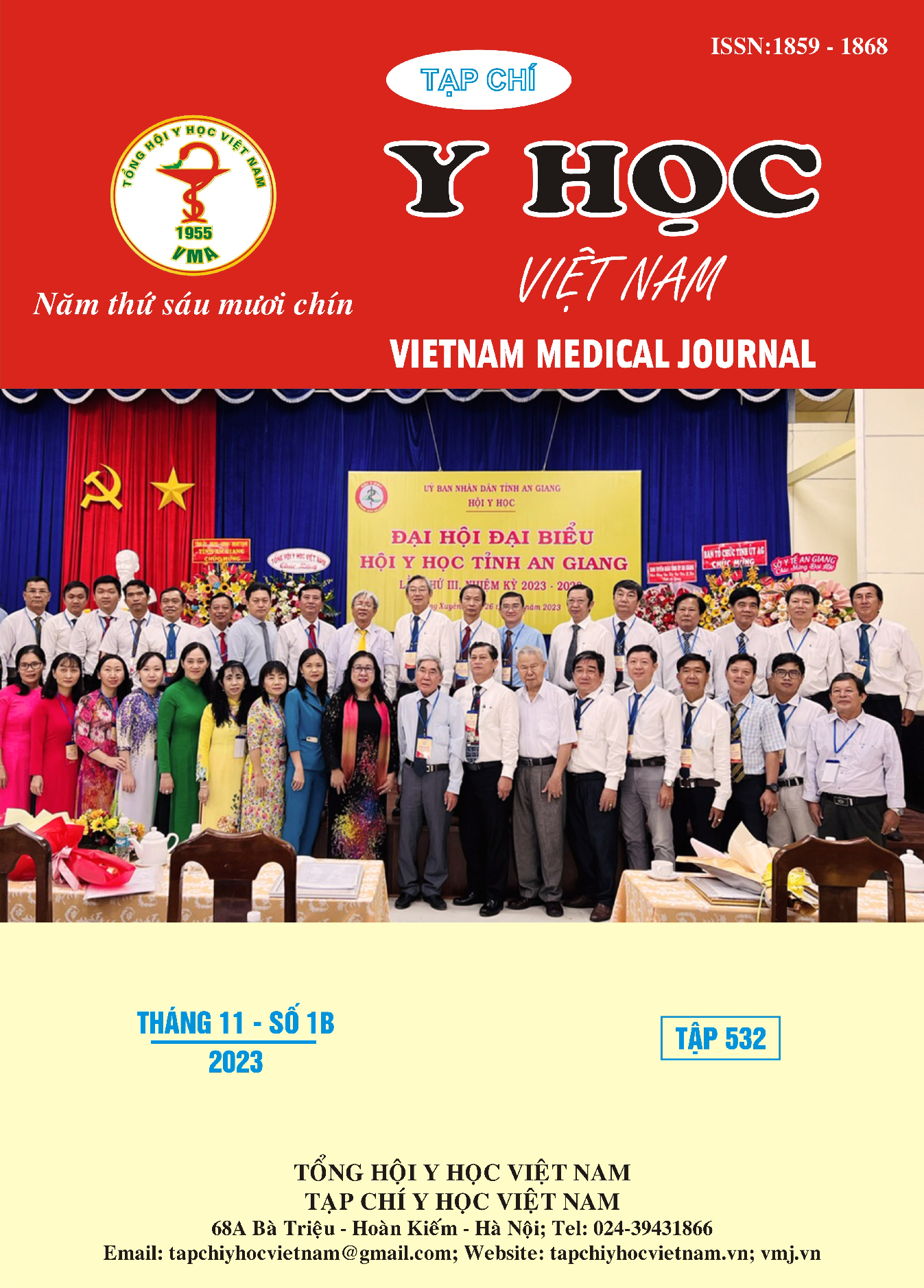ĐẶC ĐIỂM LÂM SÀNG, CẬN LÂM SÀNG VIÊM BỜ MI KẾT GIÁC MẠC TẠI BỆNH VIỆN MẮT TRUNG ƯƠNG
Nội dung chính của bài viết
Tóm tắt
Mục tiêu: Mô tả các đặc điểm lâm sàng, cận lâm sàng của bệnh nhân viêm bờ mi kết giác mạc. Đối tượng và phương pháp: Nghiên cứu mô tả tiến cứu không có nhóm đối chứng trên các bệnh nhân được chẩn đoán viêm bờ mi kết giác mạc tại Bệnh viện Mắt Trung ương. Kết quả: Nghiên cứu trên 45 mắt (31 bệnh nhân), độ tuổi trung bình là 13,78 ± 11,32 (từ 3 - 50 tuổi), thường gặp ở nhóm tuổi từ 5 – 10 tuổi; nữ giới chiếm tỷ lệ 69% với tỷ lệ nữ:nam là 2,21 : 1. Yếu tố nguy cơ chính là tiền sử chắp và /hoặc lẹo, viêm bờ mi, viêm kết mạc tái phát. 100% bệnh nhân có viêm bờ mi trước (ngứa mi, vảy bờ mi) và rối loạn chức năng tuyến Meibomius (MGD). 100% bệnh nhân có cương tụ kết mạc và 6,67% viêm kết mạc bọng. Các tổn thương giác mạc bao gồm: 84,44% viêm giác mạc chấm nông; 57,78% viêm giác mạc rìa; 68,89% tân mạch giác mạc và 61,36% thâm nhiễm giác mạc. Xét nghiệm vi sinh nhuộm soi và soi tươi có tỷ lệ dương tính 100% trong đó 77,78% là vi khuẩn Gram dương (55,56% Cầu khuẩn Gram dương và 22,22% Trực khuẩn Gram dương); 2,22% Nấm và 2,22% Demodex. Xét nghiệm nuôi cấy định danh vi khuẩn âm tính trên tất cả các mẫu bệnh phẩm. Kết luận: Viêm bờ mi kết giác mạc là bệnh lý hay gặp ở trẻ em, đa phần là nữ giới, thường gặp ở độ tuổi thanh thiếu niên . Bệnh biểu hiện lâm sàng đa dạng đồng thời ở bờ mi, kết mạc và giác mạc với nguyên nhân hay gặp là Cầu khuẩn Gram dương. Các tổn thương giác mạc có nguy cơ đe dọa thị lực nếu không được phát hiện sớm và kịp thời.
Chi tiết bài viết
Từ khóa
viêm bờ mi kết giác mạc, viêm kết mạc bọng, viêm giác mạc bọng.
Tài liệu tham khảo
2. Jones SM, Weinstein JM, Cumberland P, Klein N, Nischal KK. Visual outcome and corneal changes in children with chronic blepharokerato-conjunctivitis. Ophthalmology. 2007;114(12): 2271-2280.
3. Hammersmith KM, Cohen EJ, Blake TD, Laibson PR, Rapuano CJ. Blepharokerato-conjunctivitis in children. Arch Ophthalmol. 2005;123(12):1667-1670.
4. Hamada S, Khan I, Denniston AK, Rauz S. Childhood blepharokeratoconjunctivitis: characte-rising a severe phenotype in white adolescents. Br J Ophthalmol. 2012;96(7):949-955.
5. Suzuki T, Mitsuishi Y, Sano Y, Yokoi N, Kinoshita S. Phlyctenular keratitis associated with meibomitis in young patients. Am J Ophthalmol. 2005;140(1):77-82.
6. Teo L, Mehta JS, Htoon HM, Tan DTH. Severity of pediatric blepharokeratoconjunctivitis in Asian eyes. Am J Ophthalmol. 2012;153(3): 564-570.e1.
7. Viswalingam M, Rauz S, Morlet N, Dart JKG. Blepharokeratoconjunctivitis in children: diagnosis and treatment. Br J Ophthalmol. 2005;89(4):400-403.
8. Wu M, Wang X, Han J, Shao T, Wang Y. Evaluation of the ocular surface characteristics and Demodex infestation in paediatric and adult blepharokeratoconjunctivitis. BMC Ophthalmol. 2019;19(1):67.


